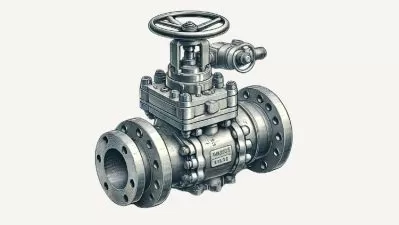Control Valve Sizing & Operation for Process Engineers
Boostrand Training
2:02:24
Description
Know more about control valve characteristics, hydraulics, calculate its pressure drop and choose its controlling cases
What You'll Learn?
- The main functions of a control valve in oil & gas, chemical & petrochemical processes
- How a control valve works?
- Valve flow coefficient (Cv)
- Valve inherent and installed characteristics
- Calculate control valve main parameters and controlling cases
Who is this for?
What You Need to Know?
More details
DescriptionSo may be you are a chemical engineer and you need to discover the considerations and common practices we should consider when placing a control valve in our process?
If this is what you are looking for, then you have come to the right place!
Control valves are vital in various industries, such as oil and gas and chemical processing plants. They are responsible for controlling more than 95% of process parameters.
In this course, we shall:
Explore the functions and operation of control valves
Delve into the concept of the control valve Cv (flow coefficient) and its importance in sizing and rating control valves
Cover inherent and installed characteristics of control valves and how the plant's configuration affects their performance
Explain the differences between inherent and installed characteristics
Learn when to use a butterfly valve as a control valve and understand how the valve's design impacts its behavior
Guide you through the valve sizing procedure and assist in choosing the appropriate control valve for various scenarios
Provide practical examples and calculations to illustrate the concepts
Receive an Excel sheet for future reference
Understand how to calculate pressure drop in control valves and select the right cases for valve sizing
Learn how the entire hydraulic system interacts and discover methods to overcome bottlenecks in the system
Explore control valve considerations in a Piping and Instrumentation diagram (P&ID)
Gain insights into isolation techniques and safety issues related to control valve failure scenarios
So are you ready to start this interesting journey?
Looking forward to having you in the course and getting started!
Who this course is for:
- Engineers concerned with working in Process Engineering
- Chemical engineering students
So may be you are a chemical engineer and you need to discover the considerations and common practices we should consider when placing a control valve in our process?
If this is what you are looking for, then you have come to the right place!
Control valves are vital in various industries, such as oil and gas and chemical processing plants. They are responsible for controlling more than 95% of process parameters.
In this course, we shall:
Explore the functions and operation of control valves
Delve into the concept of the control valve Cv (flow coefficient) and its importance in sizing and rating control valves
Cover inherent and installed characteristics of control valves and how the plant's configuration affects their performance
Explain the differences between inherent and installed characteristics
Learn when to use a butterfly valve as a control valve and understand how the valve's design impacts its behavior
Guide you through the valve sizing procedure and assist in choosing the appropriate control valve for various scenarios
Provide practical examples and calculations to illustrate the concepts
Receive an Excel sheet for future reference
Understand how to calculate pressure drop in control valves and select the right cases for valve sizing
Learn how the entire hydraulic system interacts and discover methods to overcome bottlenecks in the system
Explore control valve considerations in a Piping and Instrumentation diagram (P&ID)
Gain insights into isolation techniques and safety issues related to control valve failure scenarios
So are you ready to start this interesting journey?
Looking forward to having you in the course and getting started!
Who this course is for:
- Engineers concerned with working in Process Engineering
- Chemical engineering students
User Reviews
Rating
Boostrand Training
Instructor's Courses
Udemy
View courses Udemy- language english
- Training sessions 31
- duration 2:02:24
- Release Date 2024/01/04











